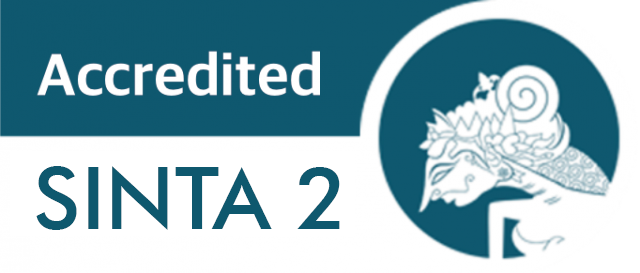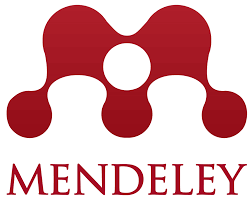Submissions
Author Guidelines
TARBIYA: Journal of Education in Muslim Society
TARBIYA: Journal of Education in Muslim Society is a peer-reviewed journal that focuses on education in Muslim society. Tarbiya Publishes two times a year since 2014. The Tarbiya aims to provide readers with a better understanding of education in Muslim society around the world through the publication either library research or research reports. The articles should be original, unpublished and not under reviewed for possible publication in any other journals. All submitted manuscripts will be blindly-reviewed by qualified academics in the field. This process may take several weeks or months.
Articles should be written in English between 5.000-12.000 Words including text, all tables and figures, notes, references, and appendices. Quotations, passages, and words in languages other than English should be translated into English. Any contributors must follow template manuscript provided by Tarbiya. It can be accesed at Tarbiya website. If original language other than English should be used, it should be minimized in amount and italicized. The manuscript submitted via website: http://journal.uinjkt.ac.id/index.php/tarbiya or sent by Email: tarbiya-fitk@uinjkt.ac.id
Submitted manuscripts should have relevance and contribute something to Education in Muslim society. The manuscripts should include: 150 words of Abstracts (each in English and Indonesia), Introduction, Methods, Results (findings), Discussion, Conclusion, Recommendations, and References. Contributors from outside Indonesia may send abstract in English only.
Once an article is accepted for publication, the author is required to fill and signed a copy-right release form (available on Journal website). The signed form should be sent to the editor via mail or email.
Tarbiya since manuscript submission year 2014, Authors should not pay some processing fees (Free Charges) for article processing and DOI maintenance once their articles has been accepted. And readers can read and download any full-text articles for free of charge. Readers can read and download any full-text articles for free of charge.
The article that will be submitted in this journal should contain:
- Information of article: Title: no more than 16 words; Author(s) name: is fully writen without any title; Institution: is completely stated, including the study program and the institution name; Corresponding author: includes name & email address
- Abstract: The abstract should be clear, concise, and descriptive. This abstract should provide a brief introduction to the problem, objective of paper, followed by a statement regarding the methodology and a brief summary of results. The abstract should end with a comment on the significance of the results or a brief conclusion. Abstracts are written in 11 pt Times New Roman, preferably not more than 300 words.
- Introduction: In Introduction, Authors should state the objectives of the work at the end of introduction section. Before the objective, Authors should provide an adequate background, and very short literature survey in order to record the existing solutions/method, to show which is the best of previous researches, to show the main limitation of the previous researches, to show what do you hope to achieve (to solve the limitation), and to show the scientific merit or novelties of the paper. Avoid a detailed literature survey or a summary of the results.
- Methods: Materials and methods should make readers be able to reproduce the experiment. Provide sufficient detail to allow the work to be reproduced. Methods already published should be indicated by a reference: only relevant modifications should be described. Do not repeat the details of established methods.
- Results and Discussion: Results should be clear and concise. The results should summarize (scientific) findings rather than providing data in great detail. Please highlight differences between your results or findings and the previous publications by other researchers.The discussion should explore the significance of the results of the work, not repeat them. A combined Results and Discussion section is often appropriate. Avoid extensive citations and discussion of published literature. In discussion, it is the most important section of your article. Here you get the chance to sell your data. Make the discussion corresponding to the results, but do not reiterate the results. Often should begin with a brief summary of the main scientific findings (not experimental results). The following components should be covered in discussion: How do your results relate to the original question or objectives outlined in the Introduction section (what)? Do you provide interpretation scientifically for each of your results or findings presented (why)? Are your results consistent with what other investigators have reported (what else)? Or are there any differences?
- Conclusion: Conclusions should answer the objectives of research. Tells how your work advances the field from the present state of knowledge. Without clear Conclusions, reviewers and readers will find it difficult to judge the work, and whether or not it merits publication in the journal. Do not repeat the Abstract, or just list experimental results. Provide a clear scientific justification for your work, and indicate possible applications and extensions. You should also suggest future experiments and/or point out those that are underway.
- References:Citing sources and listing references should comply with the APA 7th edition referencing styles.
McKenzie J. A. (1993). Power learning in the classroom. California: Corwin Press, Inc. Book
Yu, A. Y., Tian, S. W., Vogel, D., & Chi-Wai Kwok, R. (2010). Can learning be virtually boosted? An investigation of online social networking impacts. Computers & Education 55(4):1494-1503. Journal
Bhavsar, D.S., Saraf, K.B. (2002). Morphology of PbI2 Crystals Grown by Gel Method. Crystal Research and Technology, 37: 51-55 Journal
Hasling, D.W., Clancey, W.J., Rennels, G.R. (1983). Strategic Explanations in Consultation. The International Journal of Man-Machine Studies, 20(1): 3-19. Journal
Clancey, W.J. (2011). Communication, Simulation, and In-telligent Agents: Implications of Personal Intelligent Machines for Medical Education. In Proceedings of the Eighth International Joint Conference on Artificial Intelligence, 556-560. Menlo Park, Calif.: International Joint Conferences on Artificial Intelligence, Inc. Conference Proceeding.
Rice, J. (2014). Poligon: A System for Parallel Problem Solving, Technical Report, KSL-86-19, Dept. of Computer Science, Stanford Univ. Report
Clancey, W.J. (2013). Transfer of Rule-Based Expertise through a Tutorial Dialogue. PhD Dissertation, Department of Computer Science, Stanford University. Thesis
Ivey, K.C. (2 September 2012). Citing Internet sources URL http://www.eei- alex.com/eye/utw/96aug.html. Website
It is suggested the use of a reference manager, MENDELEY and ZOTERO
The article should also use a body-note format of citation, instead of footnote or in-note.
E.g.
|
Zaidan (2005, 15) argues that education should promote freedom and social justice. or It is arguable to say that education should promote freedom and social justice (Zaidan, 2005, 15).
|
1. General Author Guidelines
All manuscripts must be submitted to TJEMS Editorial Office by Online Submission at E-Journal portal address: http://journal.uinjkt.ac.id/index.php/tarbiya/about/submissions#onlineSubmissions, where author register as Author and/or offered as Reviewer by online. If authors have any problems on the online submission, please contact Editorial Office at the following email: tarbiya-fitk@apps.uinjkt.ac.id.
The following documents should accompany the manuscripts submitted by online through online submission interface (as supplementary files):
- A covering letter, outlines the basic findings of the paper and their significance.
Three types of manuscripts are acceptable for publication: Original Research Articles, Review Articles, and Short Communication.
2. Manuscript Template
Manuscript should be prepared according to the following author guidelines in the MS Word article template: Author Guidelines
3. Reviewing of manuscripts
Every submitted paper is independently reviewed by at least two peer-reviewers. Decision for publication, amendment, or rejection is based upon their reports/recommendation. If two or more reviewers consider a manuscript unsuitable for publication in this journal, a statement explaining the basis for the decision will be sent to the authors within three months of the submission date.
4. Revision of manuscripts
Manuscripts sent back to the authors for revision should be returned to the editor without delay. Revised manuscripts can be sent to editorial office through the Online Submission Interface (http://journal.uinjkt.ac.id/index.php/tarbiya). The revised manuscripts returned later than three months will be considered as new submissions.
5. Editorial Office of TARBIYA Journal
All correspondences should be sent to the following Editorial Office:
Assoc. Muhammad Zuhdi, M.Ed., Ph.D (Editor-in-Chief)
Editorial Office of TARBIYA: Journal of Education in Muslim Society
Faculty of Education and Teacher Training,
UIN (State Islamic University) Syarif Hidayatullah Jakarta.
Jl. Ir. H. Juanda No 95 Ciputat, 15412, Jakarta.
Email : tarbiya-fitk@apps.uinjkt.ac.id /jurnal-fitk@apps.uinjkt.ac.id
E-journal: http://journal.uinjkt.ac.id/index.php/tarbiya
6. Guideline for Online Submission
Author should first register as Author and/or is offered as Reviewer through the following address: http://journal.uinjkt.ac.id/index.php/tarbiya/about/submissions#onlineSubmissions
Author should fulfill the form as detail as possible where the star marked form must be entered. After all form textbox was filled, Author clicks on Register button to proceed the registration. Therefore, Author is brought to online author submission interface where Author should click on New Submission. In the Start a New Submission section, click on Click Here: to go to step one of the five-step submission process.
The following are five steps in online submission process:
Step 1 Starting the Submission: Select the appropriate section of journal, i.e. Original Research Articles, Review Article, or Short Communication. Thus, author must check-mark on the submission checklists.
Step 2 Uploading the Submission: To upload a manuscript to this journal, click Browse on the Upload submission file item and choose the manuscript document file to be submitted, then click Upload button. Please make sure that the manuscript file has been uploaded.
Step 3 Entering Submissions Metadata: In this step, detail authors metadata should be entered including marked corresponding author. After that, manuscript title and abstract must be uploaded by copying the text and paste in the textbox including keywords.
Step 4 Uploading Supplementary Files: Supplementary file should be uploaded including Covering/Submission Letter, and Signed Copyright Transfer Agreement Form. Therefore, click on Browse button, choose the files, and then click on Upload button.
Step 5 Confirming the Submission: Author should final check the uploaded manuscript documents in this step. To submit the manuscript to TARBIYA journal, click Finish Submission button after the documents is true. The corresponding author or the principal contact will receive an acknowledgement by email and will be able to view the submission’s progress through the editorial process by logging in to the journal web address site.
After this submission, Author who submits the manuscript will get a confirmation email about the submission. Therefore, Author is able to track his submission status at anytime by logging in to the online submission interface. The submission tracking includes status of manuscript review and editorial process.
7. User Rights
All articles published Open Access will be immediately and permanently free for everyone to read and download. We are continuously working with our author communities to select the best choice of license options, currently being defined for this journal as follows:
Creative Commons Attribution- ShareAlike (CC BY- SA)
Submission Preparation Checklist
All submissions must meet the following requirements.
- The submission has not been previously published, nor is it before another journal for consideration (or an explanation has been provided in Comments to the Editor).
- The submission file is in OpenOffice, Microsoft Word, RTF, or WordPerfect document file format.
- The text adheres to the stylistic and bibliographic requirements outlined in the Author Guidelines, which is found in About the Journal.
- The text is single-spaced; uses a 12-point font; employs italics, rather than underlining (except with URL addresses); and all illustrations, figures, and tables are placed within the text at the appropriate points, rather than at the end.
Privacy Statement
The names and email addresses entered in this journal site will be used exclusively for the stated purposes of this journal and will not be made available for any other purpose or to any other party.











